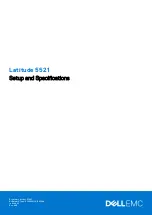
Interference Considerations
When you run cables for any significant distance in an electromagnetic field, interference can occur between
the electromagnetic field and the signals on the cables. This has the following implications on the installation
of terminal plant cabling:
•
Unshielded plant cabling can emit radio interference.
•
Strong electromagnetic interference (EMI), especially as caused by lightning or radio transmitters, can
destroy the EIA/TIA-232 drivers and receivers in Cisco VG310 or Cisco VG320.
Consider the following guidelines:
•
To prevent emitted radio interference, use twisted-pair cables with a good distribution of grounding
conductors in your plant cabling.
•
If you have cables exceeding recommended distances, or if you have cables that pass between buildings,
give special consideration to the effect of lightning strikes or ground loops. If your site has these
characteristics, consult experts in lightning suppression and shielding. The electromagnetic pulse caused
by lightning or other high-energy phenomena can easily couple enough energy into unshielded conductors
to destroy electronic devices. Take precautions to avoid these problems by providing a properly grounded
and shielded environment and by installing electrical surge suppression.
•
All module openings must be either occupied or covered to prevent electromagnetic interference
—
you
must either install a module in its vacant slot or install a cover plate over the opening.
•
Consult experts in radio-frequency interference (RFI) for advice on the prevention of electromagnetic
interference.
Mounting Tools and Equipment
The following are the tools and parts required to install the voice gateway:
•
ESD-preventive cord and wrist strap.
•
Standard flat-blade screwdrivers-small (3/16-in. [4 mm to 5 mm]) and medium (1/4-in. [6 mm to 7 mm]):
◦
To attach brackets to a rack or wall.
◦
To install or remove modules.
◦
To remove the cover if you are upgrading memory or other components.
•
Phillips screwdriver for attaching brackets to the chassis.
•
Mounting brackets and screws for 24-inch rack, if required:
◦
Four Telco machine screws for installing the chassis in a rack (use the screw size required by the
rack).
•
Screws and anchors for wall-mounting, if required:
◦
Eight wood screws or other fasteners for installing the chassis on a wall. An additional starter screw
can be used to facilitate wall-mounting.
Cisco VG310 and Cisco VG320 Voice Gateways Hardware Installation Guide
OL-31292-01
19
Planning Your Installation
Interference Considerations
















































